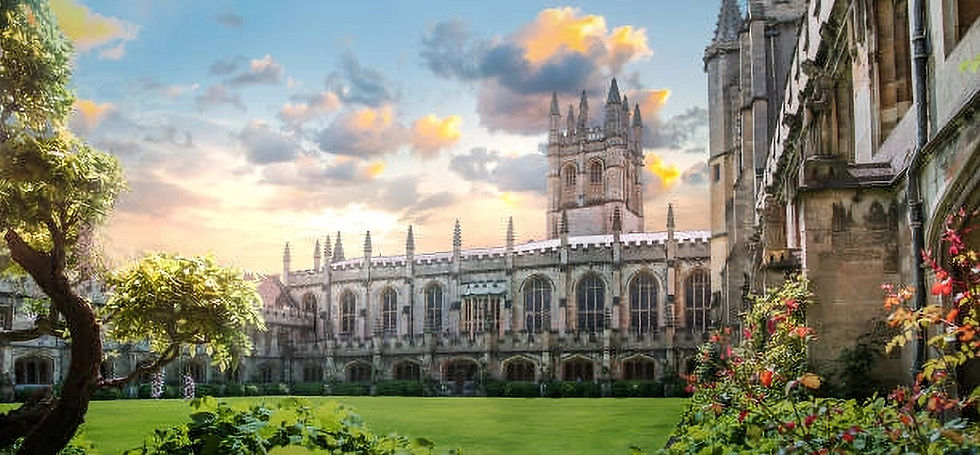Boating on the River Thames
- Alex van Terheyden

- Oct 1, 2020
- 7 min read
Updated: Nov 16, 2023

On a typical cloudy day southwest of London, I looked up at the clouds and hoped for sunshine. Thankfully my wishes were granted intermittently as the day went along - radiant sunshine would make for the perfect day.
My journey began in the little town of Weybridge, a quaint but humble town by the River Wey in the Elmbridge district of Surrey. It is bounded to the north by the River Thames at the mouth of the Wey, from which it gets its name. It is an outlying suburban town within the Greater London Urban Area, situated 16 miles (25 km) southwest of central London. Those window shopping for a new home in Weybridge will find property prices are well above the national average - so much so that six of the ten most expensive streets in South East England are to be found in Weybridge.
In H. G. Wells's novel The War of the Worlds (1897), Weybridge was the location of a battle in which a Martian fighting machine was destroyed. The title of chapter 12 of the book is: "What I saw of the Destruction of Weybridge and Shepperton". The battle is also featured in the track "The Artilleryman and the Fighting Machine" from Jeff Wayne's Musical Version of The War of the Worlds (1978), and in a graphic novel by Ian Edginton and D'Israeli (2006), adapted from Wells' book. It was also the location where a ship carrying refugees from Southern England, sailed out of the Harbour protected by several vessels including the ship "Thunderchild". It was this ship that was involved in the battle and also managed to destroy one of the Martian Fighting Machines (only to be destroyed itself)
One last mention before we move away from Weybridge - John Lennon and Ringo Starr lived in Weybridge for short periods over their lifetimes. However, this post is about Boating on the Thames and the delights that can be found while bobbing up and down the world's shortest most famous river.
By European standards, the river Thames is seemingly insignificant. At only 215 miles (346km) from source to mouth, it is not only dwarfed by the major waterways of the continent, but it is not even the longest river in the United Kingdom. The Severn River is the longest river in the United Kingdom, covering a distance of 220 miles. Nevertheless, its location has ensured that it has held unparalleled importance to the country, as it flows through key places of national influence, such as the university city of Oxford to the west, past the royal castle at Windsor then on to the capital of London and then a tidal section to the east. It is not without reason that it has been dubbed ‘the shortest famous river in the world’, ‘an open-air museum of English culture’ and even ‘liquid history’.

The River Thames History
The water of the river Thames has been utilised by settlers since Palaeolithic times and there is an ongoing discussion about how the complex processes of silting, geomorphological change, and human intervention impacted its use. Although widespread canal-building (mainly in coastal areas) occurred in Britain during Roman times, it was the building of mills from 950 AD onwards that is thought to have accidentally encouraged trade further inland, as they required the construction of dams and weirs with flash locks. These were built on the steeper section of the waterway below Oxford and helped to break up the river into a succession of deep slow-flowing pools, which made travelling on the river by boat easier (and in both directions). By the eleventh century, the Thames was an important transport artery, as is shown by the network of landing places (hythes) and salt ways that punctuated it, as well artificial channels that were built for trade on or by it, most notably a section by Abingdon dug in the 1050s to by-pass a section of the river that was difficult to navigate.

Boats would have been used for both local and long-distance transportation and it is thought that the medieval heyday of the latter, which would have been much cheaper than travelling by road, was between 1100 and 1300. Certain carrying goods, like grain, wool, cloth and minerals, were transported to London – presumably with passengers occasionally conveyed too – whilst some items, such as pottery and herrings, would have been taken back on the more difficult and laborious upstream journey.
The Thames was a contested resource though, as mill owners, boat operators and fishermen all wanted to use the water for different purposes (and according to different seasonal rhythms), whilst local populations also needed to be able to cross the waterway on fords, ferries or bridges. Indeed, from 1100 onwards, the building of new bridges and causeways also altered the physical appearance of the Thames. Furthermore, these human activities could be affected by natural processes like drought and flooding. The latter could have a damaging effect on property, but it could also protect the river from development, thereby helping to maintain the river’s appearance.
A symbiotic relationship developed between the different groups using the river that was ‘normally contentious’ and ‘occasionally creative’. Travelling by boat on the river was a slow process, as craft not only had to be towed by horses that had to evade any obstacles on land but passing through the locks could be dangerous. Boats had to wait for the miller to come to draw his paddles (for a fee), which produced a rapid release (‘flash’) of water, which enabled the boat to pass through, either by ‘shooting’ through with the flow or being hauled up against the stream (once the water levels were close to one another). The release of water could be so great that sometimes a boat operator travelling upstream had to wait until the levels of water had built up again and they would sometimes face charges from the riparian landowners.
Although the weirs are believed to have initially helped the passage of boats, they could also potentially cause difficulties, because (1) they could obstruct the river, (2) they could adversely affect the level of the water and (3) they could be both slow and costly to pass through. Indeed, we know that the former was a persistent problem, as there were recurring legal attempts to try to keep the waterway clear of obstructions from the twelfth century onwards, such as the Magna Carta’s injunction to clear fish weirs from the waterway. Although control of the river was sold by the Crown to the City of London in 1197, there was no effective management of the river above Staines, where the new jurisdiction extended to.
Furthermore, the number of weirs on the river above Henley grew to such a number that it became increasingly time-consuming and less cost-effective to travel on it. This led to a ‘spiral of decay’ that eventually led to the section between Oxford and Burcot becoming unnavigable for larger craft by the end of the sixteenth century.

Boating on the Thames
On this reasonably sunny day, I found myself on a very nice speed boat - although you can't exactly speed on the River Thames. Due to River laws, you can only go 5mph on the Thames so the roofless boat should really be defined as a leisure boat. The history of the River Thames is best experienced while on the River itself. For those of you not lucky enough to have a mate with a boat this shouldn't stop you. There are an array of boat companies up and down the River willing to rent you a boat for a few hours to a few weeks depending on your preference. To make a holiday of it you could even sleep on the boat or stay in one of the nearby hotels or B&Bs in the local area.
My journey was from Weybridge to Hampton Court and then back, of course, you could boat any part of the Thames and depending upon Time restraints you could do all 215 Miles if you were so inclined! Let me know if you do that! Chugging along at 5mph and passing through a variety of locks it took around 2 hours to get to Hampton Court - I think we could have got there faster but we stopped in various places to admire the scenery along the way.
Hampton Court Palace is a Grade I listed royal palace in the London Borough of Richmond upon Thames, 12 miles (19.3 kilometres) southwest and upstream of central London on the River Thames. Construction of the palace began in 1515 for Cardinal Thomas Wolsey, a favourite of King Henry VIII. In 1529, as Wolsey fell from favour, the cardinal gave the palace to the king to check his disgrace. The palace went on to become one of Henry's most favoured residences; soon after acquiring the property, he arranged for it to be enlarged so that it might more easily accommodate his sizeable retinue of courtiers. Along with St James' Palace, it is one of only two surviving palaces out of the many the king owned. The palace is currently in the possession of Queen Elizabeth II and the Crown.
Today, the palace is open to the public and a major tourist attraction, easily reached by train from Waterloo station in central London and served by Hampton Court railway station. Of course, you could always stay in an Airbnb or a hotel right by the Palace and bask in the shadow of Royalty.
Apart from the Palace itself and its gardens, other points of interest for visitors include the celebrated maze, the historic royal tennis court and the huge grapevine, the largest in the world as of 2005. The palace's Home Park is the site of the annual Hampton Court Palace Festival and Hampton Court Palace Flower Show.
My river journey from Weybridge to Hampton Court & then back again was of course documented. Do check it out (video at the top of this page) and remember to click subscribe it helps the YouTube Gods decide if a channel is worthy of their platform.
An experience similar to this experience would be via the Airbnb Experiences which you will know I'm a big fan of. I have included the best experiences below and will update this article when I discover new experiences worthy of your time. My Recommendations for boating on the Thames:
If you appreciate this information It takes a lot of Coffee to make these blogs and videos. If you would like to buy me a Coffee I use the wonderful people at Ko-fi.
Many thanks - The Wondering Englishman - Alex van Terheyden













































































































Boating on the River Thames offers a unique way to explore London's landmarks and scenic countryside. Whether it's a leisurely row or a guided tour, the river provides picturesque views and historical insights. Boor Verleih Cannobio